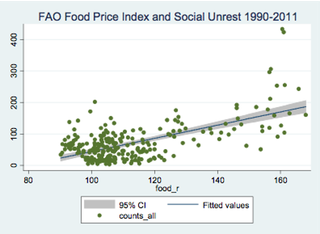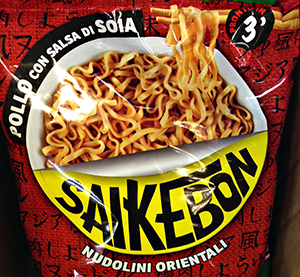
Podcast: Play in new window | Download (Duration: 16:40 — 23.4MB)
Subscribe: Google Podcasts | Spotify | Android | RSS | More
 It is quite amazing how popular food tours and cooking classes are in Italy. When in Rome, many people seem to want to eat, and cook, like a Roman. Well, not entirely, and not like some Romans. I spoke to Francesca Flore, who offers both tours and cooking classes, and she reserved some choice words for those quintessential Roman dishes based on the famous quinto quarto, the fifth quarter of the carcass. Or, less obtusely, offal.
It is quite amazing how popular food tours and cooking classes are in Italy. When in Rome, many people seem to want to eat, and cook, like a Roman. Well, not entirely, and not like some Romans. I spoke to Francesca Flore, who offers both tours and cooking classes, and she reserved some choice words for those quintessential Roman dishes based on the famous quinto quarto, the fifth quarter of the carcass. Or, less obtusely, offal.
Francesca told me that she’s always been interested in food, and that while working in London she decided to take herself off to Australia to study Cooking and Patisserie at the Cordon Bleu School in Sydney. Back in Rome, she put all that knowledge to use catering private parties and branching out into food tours and cooking classes.
We talked about what people want, what they get, and how she views the past and future of Italian food.
Notes
- Francesca Flore’s flash website gives a taste of the food tours and cooking classes she offers.
- The Mercato Central in Florence has a website that is way too groovy for its own good. And, wonderfully Italian, an undated entry at a site called Florence Online, tells us both that the upstairs is closed and that “the vendors appear to want to stay where they are” in a tent below.
- Cover photograph, of Francesca supervising the sprinkling of icing sugar on cannoli, by Chris Warde-Jones for the New York Times.

 This episode of Eat This Podcast is something of a departure. With nothing in the pantry, so to speak, I had to make something with what I had: myself. So I hooked myself up to the audio recorder and went about some of my customary weekend cooking, muttering out loud about what I was doing and offering some reflections on my attitude to food and cooking. I hope the result sheds some light on where I’m coming from. Normal service will be resumed next episode.
This episode of Eat This Podcast is something of a departure. With nothing in the pantry, so to speak, I had to make something with what I had: myself. So I hooked myself up to the audio recorder and went about some of my customary weekend cooking, muttering out loud about what I was doing and offering some reflections on my attitude to food and cooking. I hope the result sheds some light on where I’m coming from. Normal service will be resumed next episode.
 “If you can tell your story with a graph or picture, do so,” says Marc Bellemare, my first guest in this episode. The picture on the left is one of his: “a graph that essentially tells you the whole story in one simple, self-explanatory picture.” Yes indeed, social unrest is caused by higher food prices. ((Yes, caused; this is no mere correlation.)) I could leave it at that, along with a link to the paper from which I lifted the picture. But this is a podcast. I have to talk to people, and that includes Marc Bellemare.
“If you can tell your story with a graph or picture, do so,” says Marc Bellemare, my first guest in this episode. The picture on the left is one of his: “a graph that essentially tells you the whole story in one simple, self-explanatory picture.” Yes indeed, social unrest is caused by higher food prices. ((Yes, caused; this is no mere correlation.)) I could leave it at that, along with a link to the paper from which I lifted the picture. But this is a podcast. I have to talk to people, and that includes Marc Bellemare. In a world in which you can get pizza in Tokyo and sushi in Rome, diets have become truly global in reach. You could argue that this has made them more, not less, diverse. Where once rice dominated Asia, wheat, potatoes and corn have made huge inroads: increased diversity. On the other hand, places that used to enjoy their own, local staples – tef in Ethiopia, buckwheat in eastern Europe – have also come under the sway of the global behemoths, and so have lost diversity. Those are two conclusions of a massive data-mining exercise that has rightfully been getting a lot of coverage:
In a world in which you can get pizza in Tokyo and sushi in Rome, diets have become truly global in reach. You could argue that this has made them more, not less, diverse. Where once rice dominated Asia, wheat, potatoes and corn have made huge inroads: increased diversity. On the other hand, places that used to enjoy their own, local staples – tef in Ethiopia, buckwheat in eastern Europe – have also come under the sway of the global behemoths, and so have lost diversity. Those are two conclusions of a massive data-mining exercise that has rightfully been getting a lot of coverage:  Sure, you’ve seen Trading Places. But do you know about the history of futures contracts, or why some things are traded on commodities markets and others aren’t? I didn’t, not really. So I spoke to Kara Newman, food writer and author of The Secret Financial Life of Food. One of the things Kara is keen to stress is that where money is involved, there’s always a temptation to cut corners, and her book is full of delicious food-based scandals. One of her favourites is The Great Salad Oil Swindle. If you’ve never heard of it, there’s an interesting reason why.
Sure, you’ve seen Trading Places. But do you know about the history of futures contracts, or why some things are traded on commodities markets and others aren’t? I didn’t, not really. So I spoke to Kara Newman, food writer and author of The Secret Financial Life of Food. One of the things Kara is keen to stress is that where money is involved, there’s always a temptation to cut corners, and her book is full of delicious food-based scandals. One of her favourites is The Great Salad Oil Swindle. If you’ve never heard of it, there’s an interesting reason why.